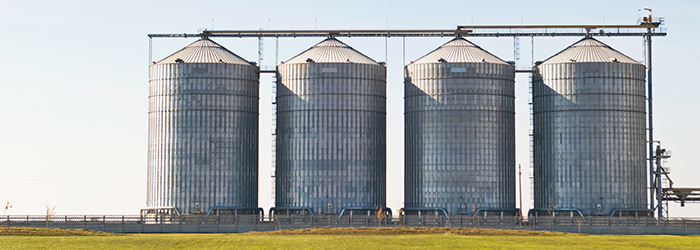

When you’ve got new content to add to your website, where does it go? If your answer was, “Our blog,” then you might want to reconsider. Why? Because that kind of site structure isn’t always the best for SEO purposes, and there’s a much better strategy.
That’s right, we’re talking about using silos to group & store content on your website.
If you want to get technical with it, you might refer to a “content silo” strategy as a deep site structure — because your site would have multiple layers and, you know, depth. But posting all your new content on your blog page? That’s called a flat site structure. Because your blog largely operates as a separate entity from your website, you can get a little strategic when deciding where new content should live.
So, are there any SEO benefits to doing it one way or the other? We’re glad you asked.
First, there are organizational benefits. Having your site structured with some uniformity, as opposed to everything living under the same blog “parent” page helps users (and Google) navigate. It’d be like having a downtown area with multiple streets, as opposed to one giant row of stores & businesses. For auto dealers, you might categorize your content in way that’s helpful to your customers. Say you want some content on your service page to help people know the difference between major repairs and simple tuneups.
You could write a very, very long page that explains it all at once. Or, you could break it into categories: Auto Repair > Major > Replacing a Transmission or even Auto Repair > Tuneup > Oil Change. That’s just one example, the possibilities are quite robust. Obviously, some content will naturally fit on your blog, but it’s best not to think of it as the “default” spot for new content, because those posts won’t necessarily rank well simply because they’re fresh blog content.
Second, in the same way that the human mind would categorize an oil change as a tuneup, and not a major repair, having a detailed site structure helps Google that it should follow suit. If you’ve got solid content across your site, including the page-level topics, then it’s easier to rank for “oil change” searches in Google, using our example from earlier.
Third, relying on direct traffic to your blog is a mistake often made by the flat site structure SEOs. They’d argue that if it takes too many clicks from the homepage to get to a blog post, that’s a bad thing. But if your goal is to drive traffic to your blog, then you’re not relying on direct traffic anyway, you’ve likely got social media campaigns and other initiatives pointing back to your blog.
Fourth, you’ve got a great internal linking opportunity with the deep site, silo structure. Any given page with helpful content can link to both upper level and lower level pages in the same “silo.” That’s not only helpful to site users researching their options (and people LOVE their options, why else do we open things in new tabs?), but everything is much more organized and much easier to find.
If you’ve got some strong opinions on deep site vs. flat site structure, then let us know in the comments below. We love hearing war stories!


